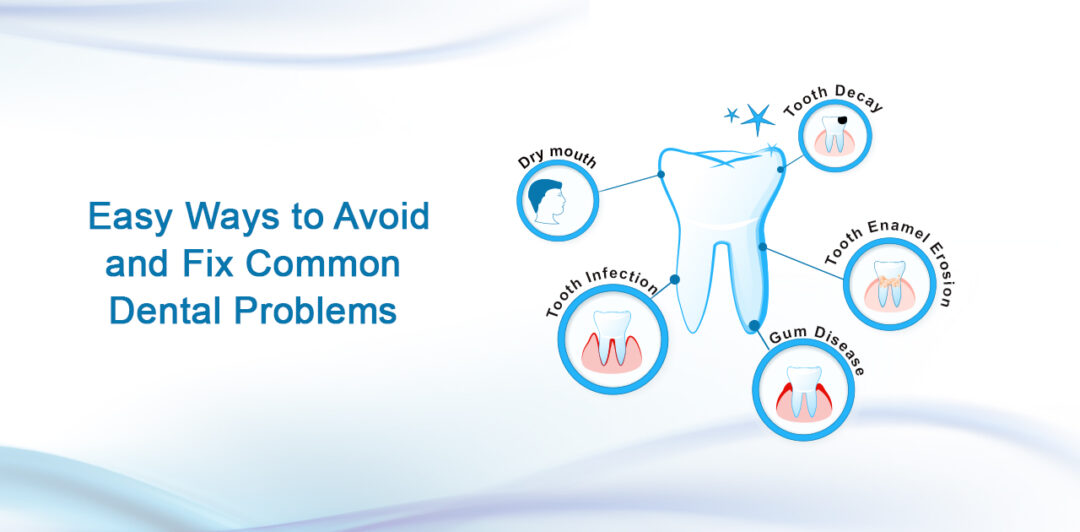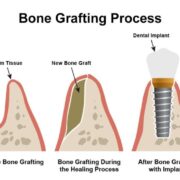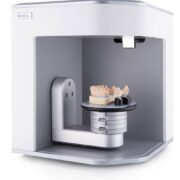Have you ever had the impression that there was a covert plot by your teeth to ruin your smile? We’ve all been there, stumbling through the complex maze of dental problems that might make someone smile less. Readers need not worry, as we are about to go on an insightful journey through the maze of common dental problems for pain. This is guided by none other than the dental expert, Dr. Chirag Chamria from Royal Dental Clinics.
Understanding Common Dental Problems
Understanding common dental issues is essential to keeping a healthy smile. Dental health is an essential component of overall well-being. Let’s examine the several problems that people could face, including their definitions, frequency, and the major effects they might have on dental health and general wellbeing.
Missing Teeth
Loss of one or more teeth is often caused by factors such as decay, gum disease, or injury. It is widely prevalent, especially among older adults, with studies suggesting that a significant percentage of the global population experiences tooth loss.
Cavities and Dental Pain
Cavities, also known as dental caries or tooth decay, are the result of bacterial activity leading to the demineralisation of tooth enamel. It is a pervasive issue, with the World Health Organisation estimating that nearly 60–90% of school children and nearly 100% of adults have dental cavities. Dental pain can arise from various sources, including tooth decay, infections, or dental trauma, resulting in discomfort or severe pain. Common, affecting people of all ages, with dental pain being a leading reason for dental visits globally.


Mobility of Teeth and Mal-Aligned Teeth
The movement or looseness of teeth usually indicates underlying issues such as gum disease or bone loss. It is linked to various dental conditions, and its prevalence varies based on age, oral hygiene, and other factors. Teeth that are not correctly positioned, leading to issues like crowding, spacing, or misalignment. Common, with a substantial portion of the population seeking orthodontic treatment for mal-aligned teeth.
Bleeding Gums and Gingival Recession
It occurs when the gums bleed during brushing or flossing, often as a sign of gingivitis or gum disease. Common and early detection is crucial to preventing the progression to more severe gum diseases. The exposure of tooth roots is due to the gradual loss of gum tissue, which is seen in a significant percentage of the population, with factors like aggressive brushing or gum disease contributing to its occurrence.
Impact on Oral Health and Overall Well-being
- Dental Pain: Negatively affects quality of life, eating habits, and can indicate underlying dental issues.
- Missing Teeth: Impacts oral function and aesthetics and may lead to further dental problems.
- Mobility of Teeth: Indicates potential gum disease or other issues affecting tooth stability.
- Mal-Aligned Teeth: Affects bite and speech and may contribute to oral hygiene challenges.
- Bleeding Gums: Signifies early-stage gum disease, which, if untreated, can lead to more severe issues.
- Gingival Recession: Exposes tooth roots, increasing sensitivity and vulnerability to decay.
Overall Well-being
Dental problems can lead to pain, discomfort, and self-esteem issues, affecting overall mental and emotional well-being. Difficulties in eating and speaking due to dental issues can impact nutrition and social interactions. Chronic conditions like gum disease have been linked to systemic health issues, emphasising the interconnectedness of oral and overall health.
4 Most Common Types of Dental Problems
Dental Cavities
Causes and Risk Factors
Dental caries, often known as cavities, are caused by oral bacteria that release acids that break down tooth enamel. It is essential to comprehend the causes and risk factors in order to effectively avoid them. The interaction of bacteria, especially Streptococcus mutans, with carbohydrates in the diet is the primary cause of acid production. Inadequate dental care, like insufficient brushing and flossing, encourages the accumulation of plaque, a germ-filled, sticky film that leads to cavities.
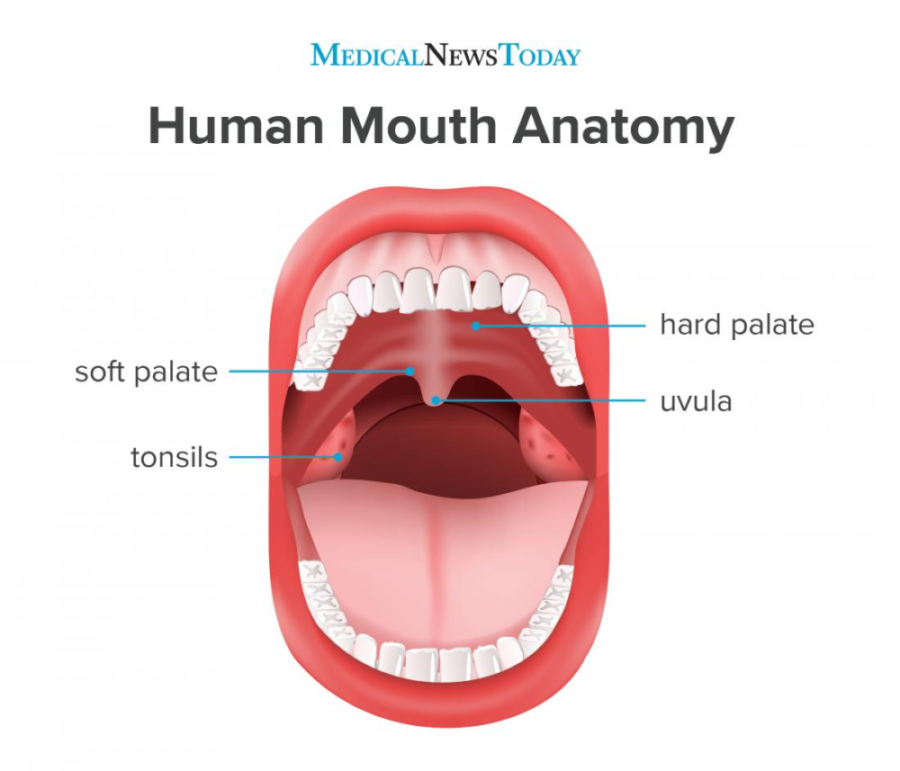
Dietary practices that increase the risk of cavities include eating frequent meals that are high in sugar and acid. Cavities are more likely to occur when saliva flow is decreased, which can be caused by dry mouth, drug side effects, or other medical conditions. dental morphology, Microorganisms may find the deep ridges and cavities in teeth to be ideal hiding spots.
Prevention Tips and Oral Hygiene Practices
- Regular Brushing: Brush teeth at least twice daily with fluoride toothpaste to remove plaque and strengthen enamel.
- Flossing: Daily flossing helps remove plaque from between teeth and along the gumline, where a toothbrush may not reach.
- Fluoride Use: Incorporate fluoride mouthwash or dental treatments as recommended by your dentist for added protection.
- Balanced Diet: Limit sugary and acidic foods, opting for a well-balanced diet rich in fruits, vegetables, and dairy.
- Chewing Sugar-free Gum: Stimulates saliva production, which helps neutralize acids and strengthen tooth enamel.
- Regular Dental Check-ups: Schedule routine dental visits for professional cleanings, examinations, and early detection of potential issues.
Dr. Chirag Chamria’s Insights on Cavity Prevention
Dr. Chirag Chamria, a leading dental expert, emphasizes the importance of a holistic approach to cavity prevention. His insights shed light on personalised strategies for maintaining optimal oral health. Dr. Chamria stresses the significance of educating patients about the impact of dietary choices on oral health. Understanding the link between sugars, acid production, and cavities empowers individuals to make informed decisions.
Recognising that each patient is unique, Dr. Chamria advocates for personalized oral care plans. Tailoring prevention strategies to an individual’s lifestyle, habits, and specific risk factors enhances the effectiveness of cavity prevention. Regular check-ups play a pivotal role in cavity prevention. Dr. Chamria recommends consistent monitoring of oral health to identify and address potential issues early on, preventing the progression of cavities.
Bleeding Gums
Signs and Symptoms
- Bleeding Gums: Especially during brushing or flossing.
- Redness and Swelling: Inflammation of the gums.
- Persistent Bad Breath: Resulting from bacterial activity.
- Receding Gums: Exposing tooth roots and increasing sensitivity.
- Changes in Tooth Alignment: Teeth may shift due to the loss of supporting structures.
Importance of Regular Dental Check-ups for Early Detection
Early Intervention: Dentists can identify signs of gum disease in its early stages, allowing for prompt intervention and preventive measures.
Professional Cleaning: Regular cleanings remove plaque and tartar, reducing the risk of gum inflammation.
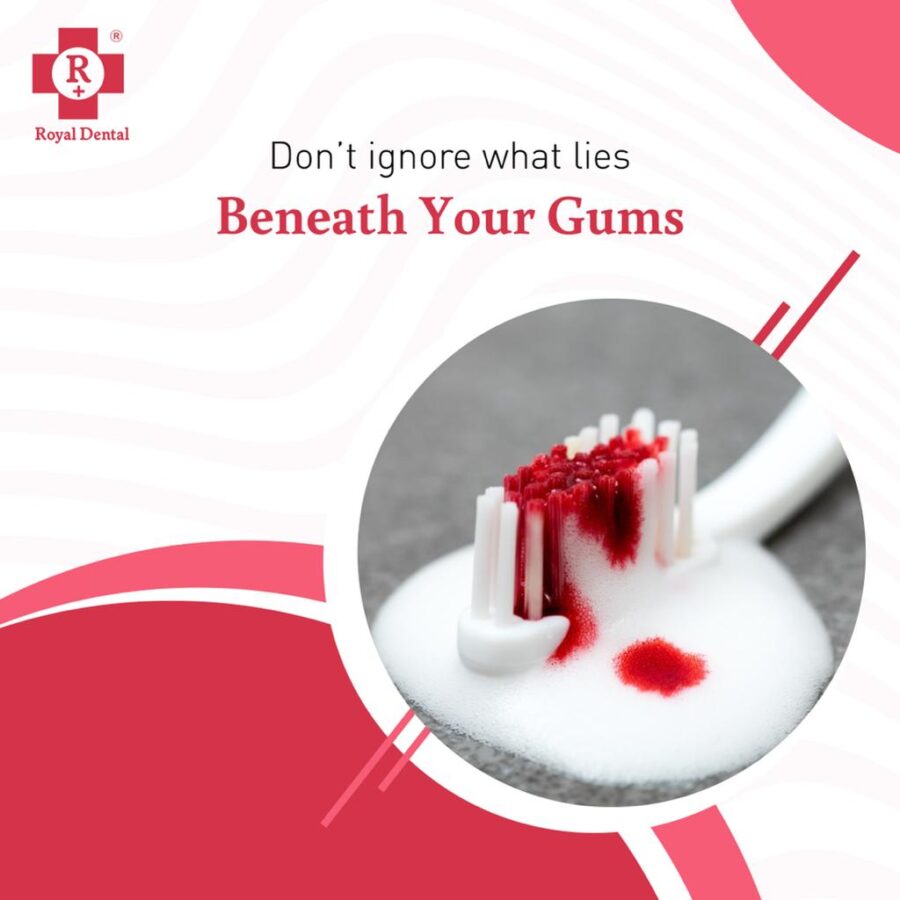
Personalized Advice: Dentists provide personalised advice on oral hygiene practices, dietary habits, and lifestyle changes to mitigate the risk of gum disease.
Monitoring Progress: Ongoing monitoring helps track the progression of gum health and adjust treatment plans accordingly.
Dr. Chirag Chamria’s Recommended Treatments
- Professional Scaling and Root Planing: This deep cleaning procedure removes plaque and tartar from below the gumline, promoting healing.
- Antimicrobial Therapy: Prescription antimicrobial mouthwashes or gels may be recommended to control bacterial activity.
- Laser Therapy: Advanced laser treatments can aid in reducing inflammation and promoting gum tissue regeneration.
- Periodontal Surgery: In severe cases, surgical interventions such as flap surgery or gum grafting may be necessary to restore gum health.
Gingival Recession
Signs and Symptoms
Tooth Sensitivity: Increased sensitivity to hot or cold temperatures due to exposed tooth roots.
Longer Teeth: The appearance of teeth becomes longer as the gum line recedes.
Notched or Indented Gums: Visible changes in the gumline, often forming notches or indentations.
Increased Tooth Mobility: As gum support diminishes, teeth may become more mobile.
Changes in Tooth Alignment: Shifting or spacing of teeth as a result of gum tissue loss.

Importance of Regular Dental Check-ups for Early Detection
Regular dental check-ups are crucial for the early detection of gingival recession, as dentists can identify the condition and address contributing factors promptly.
- Early Intervention: Dentists can identify signs of gingival recession in its early stages, allowing for preventive measures to be implemented.
- Addressing Underlying Causes: Identifying and addressing the underlying causes, such as gum disease or aggressive brushing, is essential for preventing further recession.
- Customized Prevention Plans: Dentists can provide personalized advice on oral hygiene practices and lifestyle changes to mitigate the risk of gingival recession.
- Monitoring Progress: Regular check-ups enable dentists to monitor the progression of gum health and adjust treatment plans as needed.
Dr. Chirag Chamria’s Recommended Treatments
Gum Grafting: In cases of significant recession, a gum graft may be performed to cover exposed tooth roots and promote gum tissue regeneration.
Scaling and Root Planing: Deep cleaning to remove plaque and tartar, addressing any underlying gum disease contributing to recession.
Orthodontic Treatment: In some cases, orthodontic interventions may be recommended to reposition teeth and reduce the impact of recession.
Desensitising Agents: Application of desensitising agents to alleviate tooth sensitivity associated with gingival recession.
Missing Teeth
Causes
Missing teeth can result from various factors, and understanding the underlying causes is essential for effective prevention and treatment.
- Tooth Decay: Untreated cavities can lead to severe damage to the tooth structure, necessitating extraction.
- Gum Disease: Periodontal disease can cause the deterioration of the supporting structures of the teeth, leading to tooth loss.
- Trauma or Injury: Accidents or injuries to the mouth can result in the loss of one or more teeth.
- Congenital Factors: Some individuals may be born with missing teeth due to genetic factors.
- Poor Oral Hygiene: Inadequate dental care can contribute to conditions like gum disease and tooth decay, ultimately leading to tooth loss.
- Age-Related Factors: Aging can be a factor in tooth loss, as the wear and tear on teeth over time may result in the need for extraction.
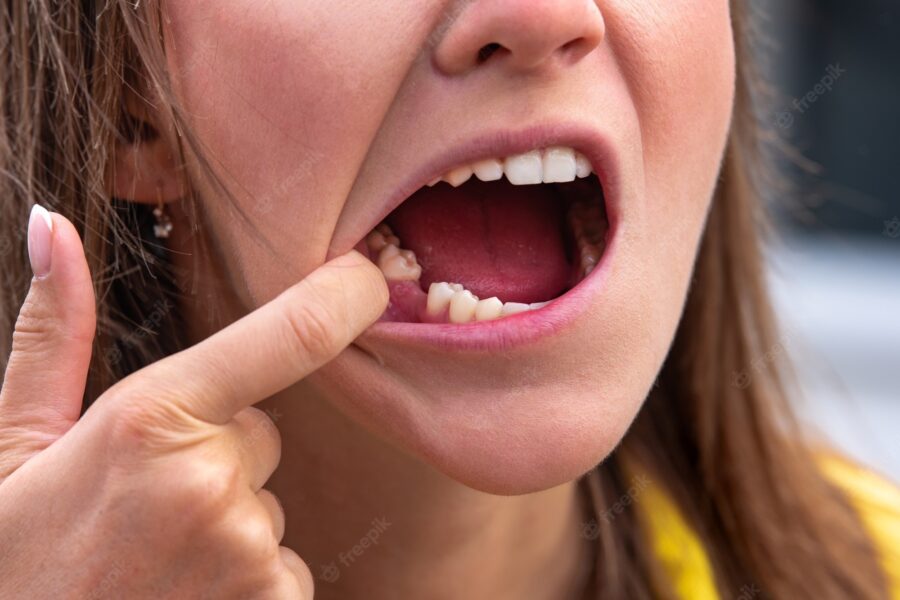
Importance of Regular Dental Check-ups for Early Detection
- Early Identification: Dentists can identify signs of potential tooth loss during routine examinations, such as cavities, gum disease, or structural issues.
- Preventive Measures: Identifying issues early on allows for preventive measures to be implemented, preventing the progression of dental problems that may lead to tooth loss.
- Customized Treatment Plans: Dentists can develop personalized treatment plans to address the specific causes of tooth loss, whether it be decay, gum disease, or trauma.
- Preserving Adjacent Teeth: Early detection allows for measures to preserve surrounding teeth, preventing a domino effect of tooth loss.
Dr. Chirag Chamria’s Recommended Treatments
Dental Implants: Considered a gold standard for tooth replacement, dental implants provide a durable and natural-looking solution by replacing both the tooth and its root.
Bridges: Traditional dental bridges can be used to replace missing teeth by anchoring artificial teeth to adjacent natural teeth.
Dentures: Partial or full dentures are removable appliances that can replace multiple missing teeth or an entire dental arch.
Implant-Supported Dentures: Combining the stability of dental implants with the versatility of dentures, implant-supported dentures provide enhanced support and function.
Dental Pain
Causes: Dental pain can arise from various underlying causes, and understanding these factors is crucial for effective treatment and prevention.
- Tooth decay (cavities): Bacterial activity leading to the demineralization of tooth enamel can result in cavities, causing tooth pain.
- Gum Disease: Inflammation and infection of the gums can lead to pain, especially if it progresses to advanced stages.
- Dental Abscess: A collection of pus in or around the tooth, often caused by severe decay or infection, can result in throbbing and intense pain.
- Tooth Fractures or Cracks: Damage to the tooth structure can expose nerve endings, causing acute pain.
- Impacted Wisdom Teeth: Wisdom teeth that do not erupt properly can cause pain and discomfort.
- Teeth Grinding (Bruxism): Clenching or grinding teeth, often during sleep, can lead to tooth pain and sensitivity.
- Temporomandibular Joint (TMJ) Disorders: Issues with the jaw joint can cause facial pain and discomfort.
Importance of Regular Dental Check-ups for Early Detection
Early Identification: Dentists can identify the causes of dental pain, such as cavities, infections, or gum disease, during routine examinations.
Preventive Measures: Identifying issues early on enables the implementation of preventive measures to avoid the progression of dental problems.
Customised Treatment Plans: Dentists can develop personalised treatment plans to address the specific causes of dental pain, alleviate discomfort, and prevent further complications.
Preserving Tooth Structure: Early detection allows for measures to preserve the tooth structure, minimising the need for extensive restorative procedures.
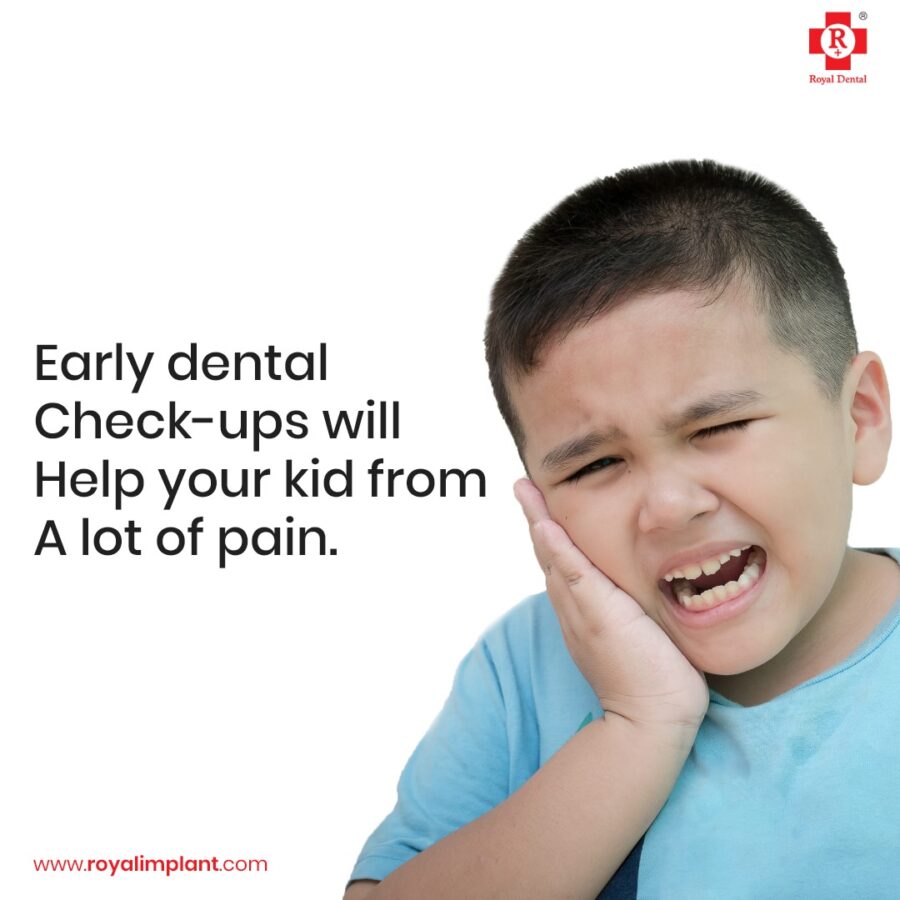
Dr. Chirag Chamria’s Recommended Treatments
Tooth-Colored Fillings: For cavities or minor tooth decay, tooth-colored fillings provide a natural-looking and durable solution.
Root Canal Therapy: In cases of severe tooth decay or infection, root canal therapy can save a compromised tooth by removing the infected pulp.
Dental Crowns: For extensively damaged teeth, dental crowns provide structural support and protect the remaining tooth structure.
Periodontal Treatment: If dental pain is related to gum disease, periodontal treatments can address the infection and restore gum health.
Bruxism Management: Customized solutions for managing teeth grinding, such as night guards or lifestyle modifications.
Mobility of Teeth
Signs and Symptoms: Tooth mobility, the movement or looseness of teeth, is a concerning dental condition that may manifest through various signs and symptoms.
Visible Movement: Noticeable shifting or rocking of the teeth when pressure is applied.
Increased Gaps: Development of spaces or gaps between teeth.
Change in Bite: Alteration in the way upper and lower teeth fit together during biting or chewing.
Gum Recession: Mobility may be accompanied by receding gums.
Tooth Sensitivity: Increased sensitivity, especially when consuming hot or cold foods.
Importance of Regular Dental Check-ups for Early Detection
Regular dental check-ups are paramount for the early detection of tooth mobility, allowing for prompt intervention and preventive measures. Dentists can identify the causes, such as gum disease or bone loss, during routine examinations.
Early identification enables the implementation of personalized treatment plans to address the specific factors contributing to tooth mobility, preserve the remaining tooth structure, and prevent further complications. Monitoring progress through regular check-ups also ensures that adjustments to the treatment plan can be made as needed.
Dr. Chirag Chamria’s Recommended Treatments
Dr. Chamria, a distinguished dental professional, recommends tailored treatments based on the underlying causes of tooth mobility. These may include gum disease treatments like scaling and root planing to address infection, bone grafting procedures to regenerate bone tissue, or the use of dental splints or braces to stabilize mobile teeth. In severe cases, tooth extraction and replacement options, such as dental implants or bridges, may be considered.
He emphasizes a comprehensive approach, considering both functional and aesthetic factors, to achieve optimal outcomes for patients dealing with tooth mobility. Seeking professional guidance and attending regular dental check-ups are crucial steps in preserving oral health and preventing the progression of tooth mobility issues.
Conclusion
In conclusion, maintaining the best possible oral health requires being aware of and responsive to common dental problems. Regular dental check-ups are essential for the early diagnosis of issues, including cavities and misaligned teeth. Dr. Chirag Chamria stresses the value of preventative dental care while offering specific treatment recommendations for each problem. Today, take control of your dental health. Make routine checkups a priority, take preventative steps, and make appointments with Dr. Chirag Chamria for individualized treatment. Make an appointment right now by calling us to ensure that you have a confident, healthy smile. A lifetime of healthy smiles is built on your proactive attitude.

